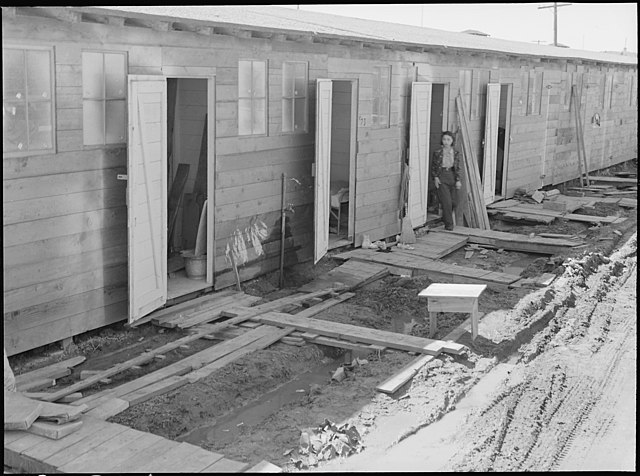The Tanforan Assembly Center was created to temporarily detain nearly 8,000 Japanese Americans, mostly from the San Francisco Bay Area, under the auspices of Executive Order 9066. After the order was signed in February 1942, the Wartime Civil Control Administration acquired Tanforan Racetrack on April 4 for use as a temporary assembly center; plans called for the site to be used to accommodate up to 10,000 "evacuees" while permanent relocation sites were being prepared further inland. The Tanforan Assembly Center began operation in late April 1942, the first stop for thousands who were forced to relocate and undergo internment during World War II. The majority were U.S. citizens of Japanese ancestry who were born in the United States. Tanforan Assembly Center was operated for slightly less than six months; most detainees at Tanforan were transferred to the Topaz War Relocation Center in Utah, starting in September. The transfer to Topaz was completed by mid-October, and the site was turned over to the Army a few weeks later.

A family arrives at the Tanforan grandstand. Dorothea Lange, 1942.
All maintenance work, repair and construction is done by volunteer workers of Japanese ancestry. This gang of boys and young men are digging a drainage tank along the front of one of the barracks. Lange, 1942.
Converted horse stalls
Barracks
Tanforan Racetrack, also known as Tanforan Park, was a thoroughbred horse racing facility in San Bruno, on the San Francisco Peninsula, in California. It was in operation from November 4, 1899, to 1964. The horse racing track and buildings were constructed to serve a clientele from nearby San Francisco.
Tanforan Racetrack
Tanforan Park track and grandstand (1908)
Panoramic photograph of the Second Annual Olympic Club Automobile Track Meet at Tanforan Park (Sep 20, 1908)
First flight in northern California








